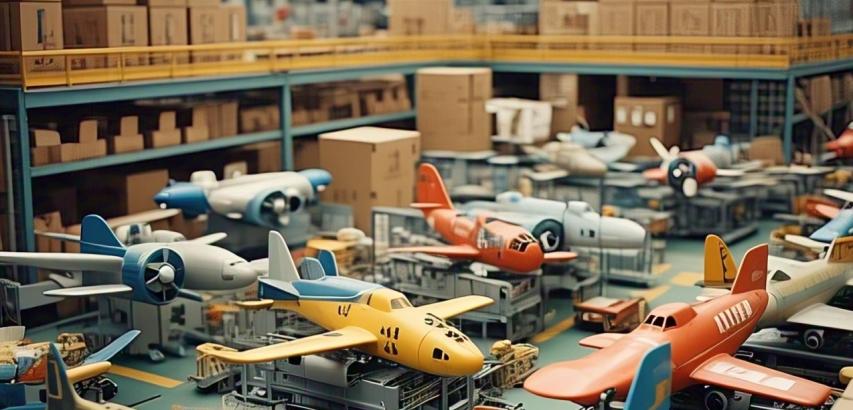The kids' toy plane industry is a vibrant segment of the global toy market, blending imaginative play with educational value. From simple die-cast models to high-tech remote-controlled (RC) drones, this industry caters to children’s fascination with aviation while fostering creativity, STEM learning, and motor skills. Here’s a comprehensive look at its trends, key players, and innovations:
Market Overview
Size & Growth: Valued at $ 5.9 billion in 2024, the industry is projected to grow at a 3.5% CAGR through 2030, driven by demand for STEM toys, licensed products, and tech-driven play.
Segments:
Die-Cast & Plastic Models (e.g., miniature airplanes).
RC Planes & Drones (app-controlled or beginner-friendly).
DIY Kits (build-and-play wooden or foam planes).
Educational STEM Toys (planes teaching aerodynamics or coding).
Key Drivers
STEM Education Demand: Parents prioritize toys that teach physics, engineering, and problem-solving.
Licensing Partnerships: Collaborations with franchises like Disney Planes, Top Gun, or Avengers boost sales.
Tech Integration: App-controlled planes, AR features, and programmable drones appeal to digital-native kids.
Sustainability Shift: Eco-friendly materials (bamboo, recycled plastics) gain traction.
Leading Brands & Innovations
LEGO: Creator Expert sets like the Boeing 787 Dreamliner combine building skills with aviation themes.
Mattel (Hot Wheels): Die-cast planes paired with interactive tracks.
DJI (Tello EDU): Kid-friendly drones teaching coding via Scratch/Python.
Thames & Kosmos: STEM kits like Aerodynamics: Flyers blending science with play.
Horizon Hobby: Entry-level RC planes (e.g., Champ S+) with auto-stabilization tech.
Trends Reshaping the Industry
Miniaturization: Pocket-sized planes for indoor play.
Customization: Kits letting kids design wings, paint, or add LED lights.
Augmented Reality (AR): Apps where virtual planes interact with real-world environments.
Eco-Consciousness: Brands like Green Toys use 100% recycled plastic.
Challenges
Safety Regulations: Strict compliance with standards (e.g., CPSIA in the U.S., CE in Europe) for small parts and materials.
Screen Competition: Balancing physical play with digital engagement.
Supply Chain Risks: Post-pandemic material shortages and shipping delays.
Regional Insights
North America & Europe: Lead in tech-driven and STEM-focused toys.
Asia-Pacific: Fastest-growing market due to rising disposable incomes and urbanization.
Middle East & Africa: Emerging demand for affordable RC planes and licensed products.
Future Outlook
AI & Robotics: Planes with voice commands or obstacle-avoidance sensors.
Subscription Models: Monthly DIY plane kits delivered to homes.
Inclusivity: Gender-neutral designs and planes representing diverse aviation heroes.
Why Parents Love Toy Planes
Educational Value: Teaches aerodynamics, gravity, and spatial reasoning.
Offline Play: Reduces screen time while encouraging outdoor activity.
Nostalgia: Connects generations through timeless aviation themes.
The kids' toy plane industry is flying high, fueled by innovation, education, and a passion for aviation. As brands merge play with purpose—prioritizing sustainability, tech, and learning—they’re not just selling toys but inspiring future pilots, engineers, and innovators.
Ready for takeoff? The sky’s the limit! ✈️🚀
 |  |  |
